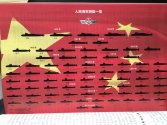Could you elaborate more on these technologies please?
Nuclear reactors work by cycling a coolant between the core where fission occurs (and heat is generated) and a heat exchanger. There's also a secondary loop from the heat exchanger to the turbine which is turned by the high pressure steam. Usually, pumps are used to move the coolant - but pumps are noisy and a submarine lives and dies by the mantra "silence is golden." It's possible in certain regimes (i.e. low power requirements when the submarine is stationary or moving slowly) when the coolant moves slowly to do away with pumping and have the fluid move by convection. That's called natural circulation.
Single steam turbine is pretty self-explanatory.
Shaftless drives use a magnetic field rather than a shaft to turn the submarine's propeller. Shafts have gears and metal parts scraping on other parts, which means noise. I should note that no submarine is known to use this technology (all public examples of it are far too low-powered to propel a submarine). You're also kind of trading one problem for another - although shaftless propellers are quiet, they use powerful magnets and there are such things as magnetic anomaly detectors.
Fairwater planes are just a terminology for planes on the sail (the part that sticks out from the body) of the submarine.
Cruciform control surfaces: The planes and tail of the submarine are at right angles. Some submarines adopt X-shaped control surfaces. That's less hydrodynamically efficient but supposedly has better control in shallow waters.
Pumpjet: A shroud around the propeller of the submarine. Quieter than an exposed propeller but less efficient.
This model is probably someone's idea of a submarine and isn't reflective of any Chinese (or any other nation's) submarine. The powerplant may be illustrative (it's known that some Type 09-III use natural circulation).

